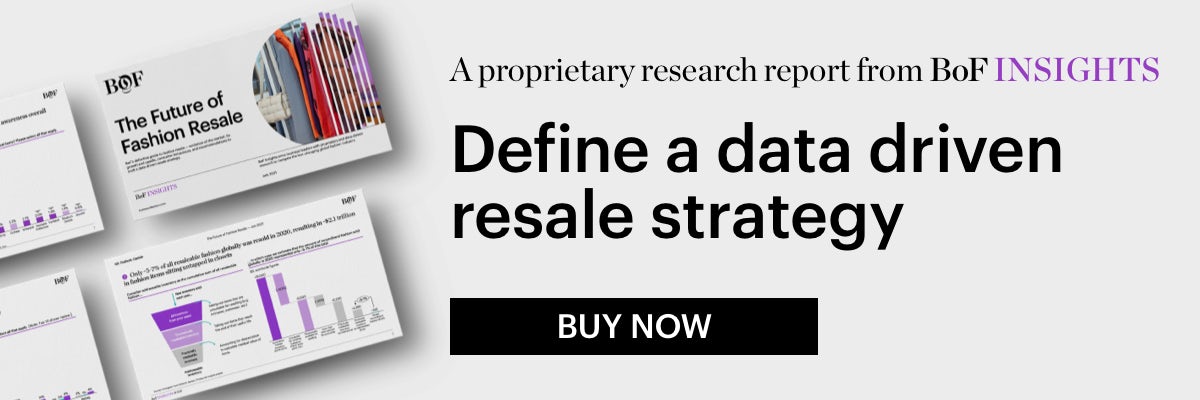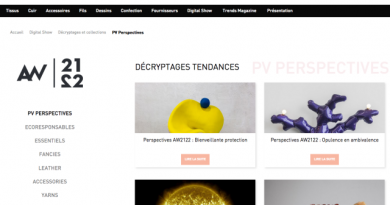Why Big Retailers Are Finally Taking Resale Seriously | BoF Professional, News & Analysis
H&M is getting into resale.
The site, H&M Rewear, is scheduled to go live on Sept. 7 in Canada, the company told BoF. If successful, the retailer would consider expanding the concept to other countries.
The fast fashion behemoth joins a rapidly growing list of traditional brands and retailers embracing the second-hand market. In July, Madewell announced it has extended a partnership with ThredUp to create the Madewell Forever programme, which allows shoppers to trade in their preworn jeans in exchange for store credit. In March, Kering acquired a 5 percent stake in Vestiaire Collective. And last week, British department store Harvey Nichols said it will launch a resale service for its customers, teaming up with backend tech provider Reflaunt — the same firm that’s working with H&M on its marketplace.
It’s a sea change for the fashion industry, which until recently viewed resale as competition for new clothes at best, and a source for counterfeits at worst. But consumer demand for second-hand clothes is soaring, and the biggest resale sites are now worth billions of dollars. This year alone, ThredUp and Poshmark, two of the biggest second-hand platforms, staged initial public offerings, and the youth-focused Depop was acquired by Etsy for $1.6 billion.
Brands and established retailers too are carving out a slice of the pie, often relying on third parties to handle the tricky technology and logistics involved. Most aren’t looking to turn resale into a major part of their business, or in some cases even to turn a profit. Instead, they see second-hand as an additional service they can offer customers who are shopping resale sites anyway (ThredUp lists 48,000 H&M items for sale in its women’s section alone). An in-house resale option can also attract some new shoppers, and it’s an opportunity for brands to signal that they prioritise sustainable fashion, though some critics question whether second-hand sales are helping the planet.
While managing a large-scale resale site is difficult, the more limited offerings from traditional retailers are a relatively minor investment compared to the potential payoff.
“For some retailers, resale may simply serve the value of the ESG (environmental, social and corporate governance) press release, which alone might cover the cost of doing business,” said Simeon Siegel, retail analyst and managing director at BMO Capital Market. ”If it’s bad, if it’s brand-eroding, they should be able to pull back.”
The Resale Appeal
For H&M, Rewear fits into the company’s broader sustainability goals. The company is already in the process of fulfilling its commitment to make all products from recycled or sustainably sourced materials by 2030, for instance.
At the end of the day we’re doing this to make change, we’re not doing this to drive sales.
But the retailer also sees an opportunity to capture market share in a country where resale isn’t as established as it is south of the border. While Poshmark operates in Canada, ThredUp does not.
H&M Canada head of marketing Geraldine Maunier-Rossi said the company wants to win customers over with an elevated user experience and emphasis on better visuals. Even though the retailer doesn’t handle any of the inventory on the website, it will use a photo-retouching tool to make the first listing photo more attractive and consistent overall. Users selling H&M items will also be able to search a catalogue of recent seasons, enabling them access to product photos, descriptions and even a price recommendation.
For Madewell, too, its Forever vertical fits under its other “do-well” initiatives, such as ongoing denim recycling offering, in which shoppers can bring in pre-worn jeans of any brand and get a $20 store credit toward a new pair of Madewell jeans.
“Where Madewell sits today… we are a well-known brand but we still have a big opportunity around getting more well-known,” said Libby Wadle, chief executive of Madewell and of its parent company, J.Crew Group. “But at the end of the day we’re doing this to make change, we’re not doing this to drive sales.”
What’s the Actual Environmental Impact?
When brands announce their participation in resale, almost always they take the opportunity to tout their commitment to sustainability. Both H&M and Madewell cite “closing the loop” as the most significant driving force behind their respective resale initiatives. The notion of circular fashion has become a buzzword in the industry, referring to the process of extending the life of a garment.
“It’s more about being a better version of ourselves, to promote sustainability,” said Frédéric Tavoukjian, country manager of H&M Canada.
Resale’s impact on fashion’s carbon footprint depends on two factors: whether it actually leads to a reduction in primary manufacturing, and the additional energy and resources required in the journey of the product from one consumer to another.
In a May study published in the academic journal Environmental Research Letters, Jarkko Levänen of LUT University in Finland found that resale contributes less toward climate change compared with textile recycling and fashion rental, two other methods commonly used to create circular fashion. But that was only true when the availability of second-hand clothing replaced the need to produce new apparel.
What we’re not seeing in all of these announcements about circularity and resale is the work that actually needs to be done in the factories themselves.
“Extended use does not automatically mean that the user’s collection of clothes remains the same, nor does reselling automatically lead to increased use time,” Levänen wrote. “It may be that people buy extra clothes from second-hand shops simply because of their cheap price. This type of activity does not have any effect on primary production.”
The rise of resale has yet to slow the growth of apparel manufacturing, said Maxine Bédat, founder of the New Standard Institute, a research and advisory group that advocates for a more sustainable fashion industry and author of “Unraveled: The Life and Death of a Garment.”
“What we’re not seeing in all of these announcements about circularity and resale is the work that actually needs to be done in the factories themselves that are producing these garments,” said Bédat. “And if they’re not looking at [resale] as a way to cannibalise their own sales, then it is just sparkly stuff.”
Resale advocates respond that the positive impact will come when the second-hand market is a larger portion of overall apparel sales.
For Madewell, the Forever programme is the start of what could be a much larger resale push, according to Wadle, who said she hopes these efforts will one day enable the industry to produce less overall. For now, resale is still in an exploratory phase.
“We will be looking to expand into other product categories, not only in Madewell but across the whole [J.Crew] group,” Wadle said.
The Future of Fashion Resale Report — BoF Insights
BoF’s definitive guide to fashion resale, covering the evolution of the market, its growth and upside, consumer behaviours and recommendations for crafting a data-driven resale strategy.
To explore the full report click here.
The Future of Fashion Resale is the first in-depth analysis to be published by the BoF Insights Lab, a new data and analysis unit at The Business of Fashion providing business leaders with proprietary and data-driven research to navigate the fast-changing global fashion industry.
Related Articles:
The Future of Fashion Resale Report — BoF Insights
Resale Sites Race to Staff Up in the Fight Against Fakes
Etsy’s Depop Deal Is Only the Beginning for Resale Consolidation


